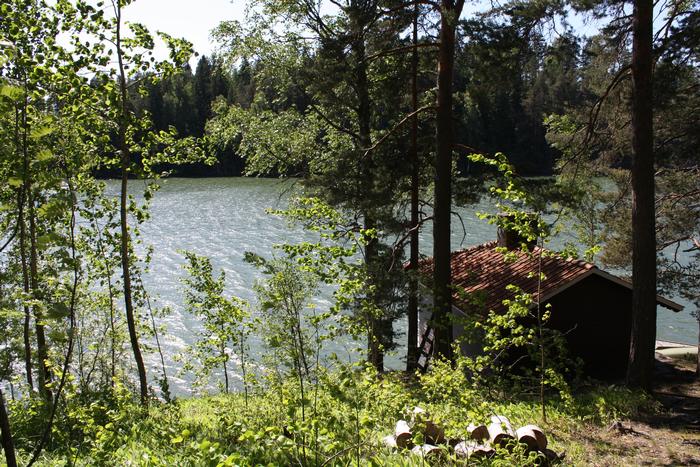Iina Valkeisenmäki ProposalSauna: Temple of the Five SensesIt is quiet. I am walking down a forested slope from the main cottage. A small wooden hut sits by a still lake. It is painted brown, with white window frames. Smoke is coming slowly out of the chimney. I enter the building through the weathered door and find myself in the dressing room, overlooking the lake. I undress and wash myself. Now I am ready for sauna. This is a memory from my childhood, from the family summerhouse. It is not a rare one; in fact, there is nothing more usual to a Finnish summer than this. The practice of going to sauna has long been a tradition in the history of the nation. In the old days, sauna was the setting for all major events in life. Women gave birth there, and the bodies of the dead were taken there to be washed. Sauna was also a place to cure diseases. Löyly, the Finnish word for the steam vapour or the process of throwing water on the rocks, used to mean a spirit or life. Yet, today it is rare to find Finns that consider sauna a sacred space, and many of the old beliefs have almost disappeared. The spiritual aspect has been overlooked and sauna is now considered in very practical terms. Small electronic saunas, built in the bathrooms of small apartments, are very far from the original idea. Heat is generated by the push of a button, in order for people to sit in these cramped boxes, where everyday life looms just around the corner. The setting could not be further from that of a traditional sauna by a lake, surrounded by forests. The practice is now a fast-forward version of the traditional process:heating the wood stove, boiling the water, swimming, and relaxing afterwards. The distinction between the sacred and the secular has been lost. The original experience of going to sauna, set amongst the natural landscape is so important that, in the urban world of today, special care should be made to preserve the experience for as many as possible. Modern Finns are a secular people, although a vast majority belong to the Lutheran Church. The indigenous naturalistic religion has disappeared completely, and sauna is the only remaining link to it. In order to maintain this link, one should focus on the spiritual quality of the architecture. What elements in the Finnish sauna are the most spiritual? How should they be built in different surroundings? How can the peacefulness of the original setting be brought to urban environments? It is these questions that are the most essential in preserving experiences like the one I had in my childhood. The time after sauna was spent sitting on the small terrace in contemplation of the stillness of the night, a small torch hung outside the window the only source of light. This ritual would occur every night of the short Nordic summer, as we sat full of admiration and thankfulness. Additional Help and InformationAre you in need of assistance? Please email info@berkeleyprize.org. |
|

